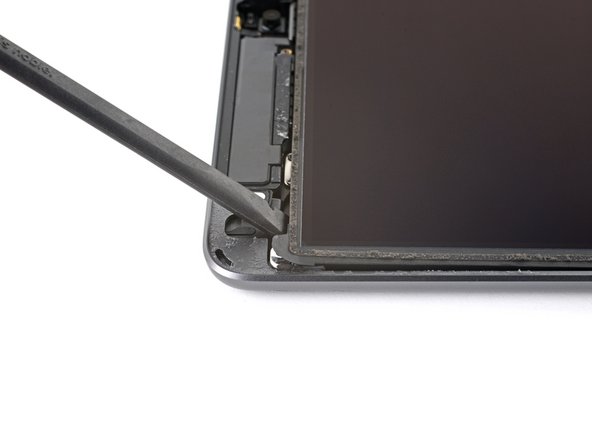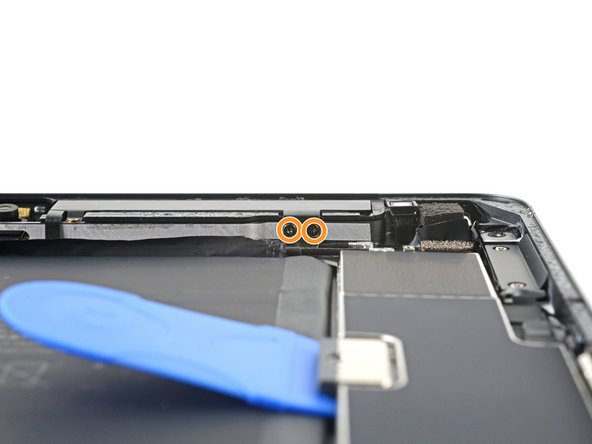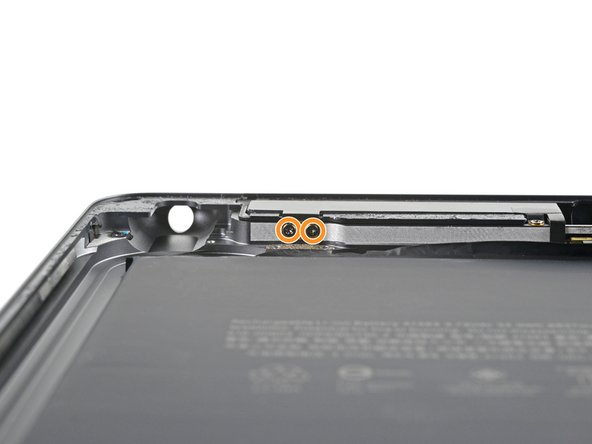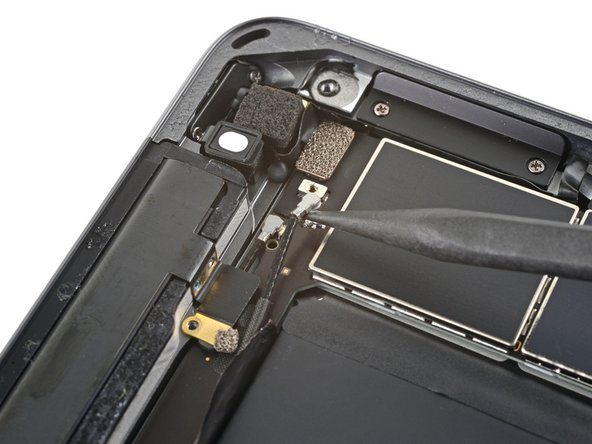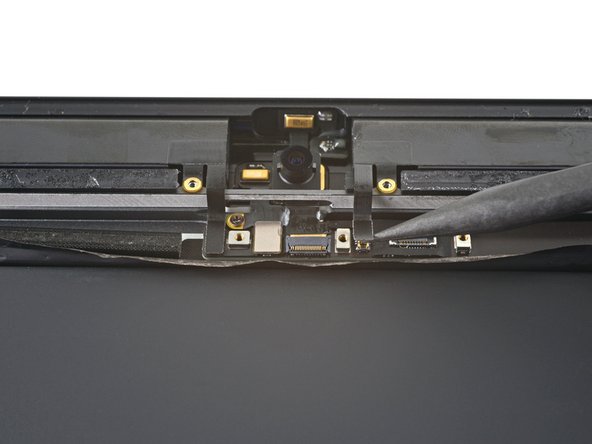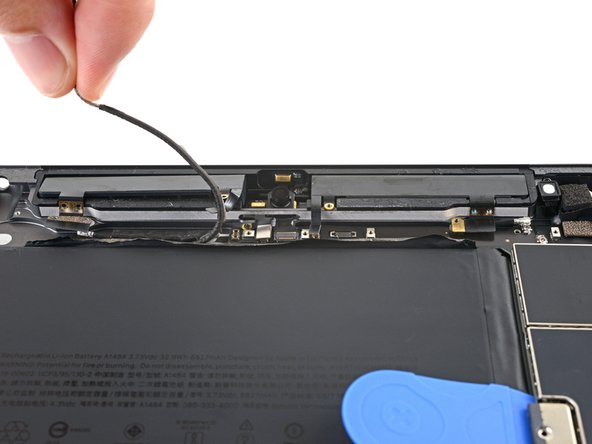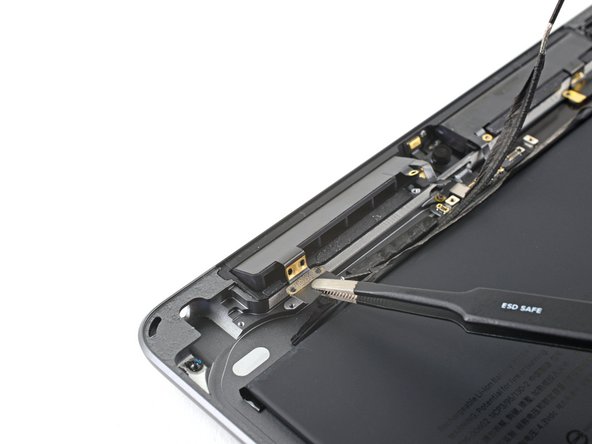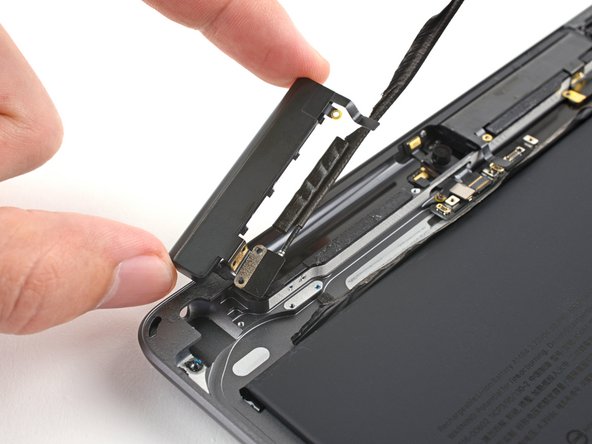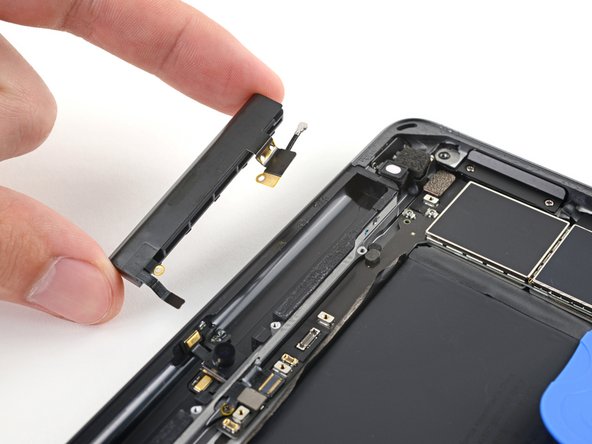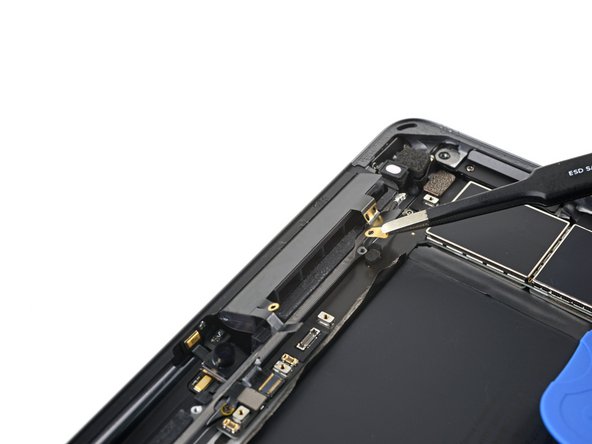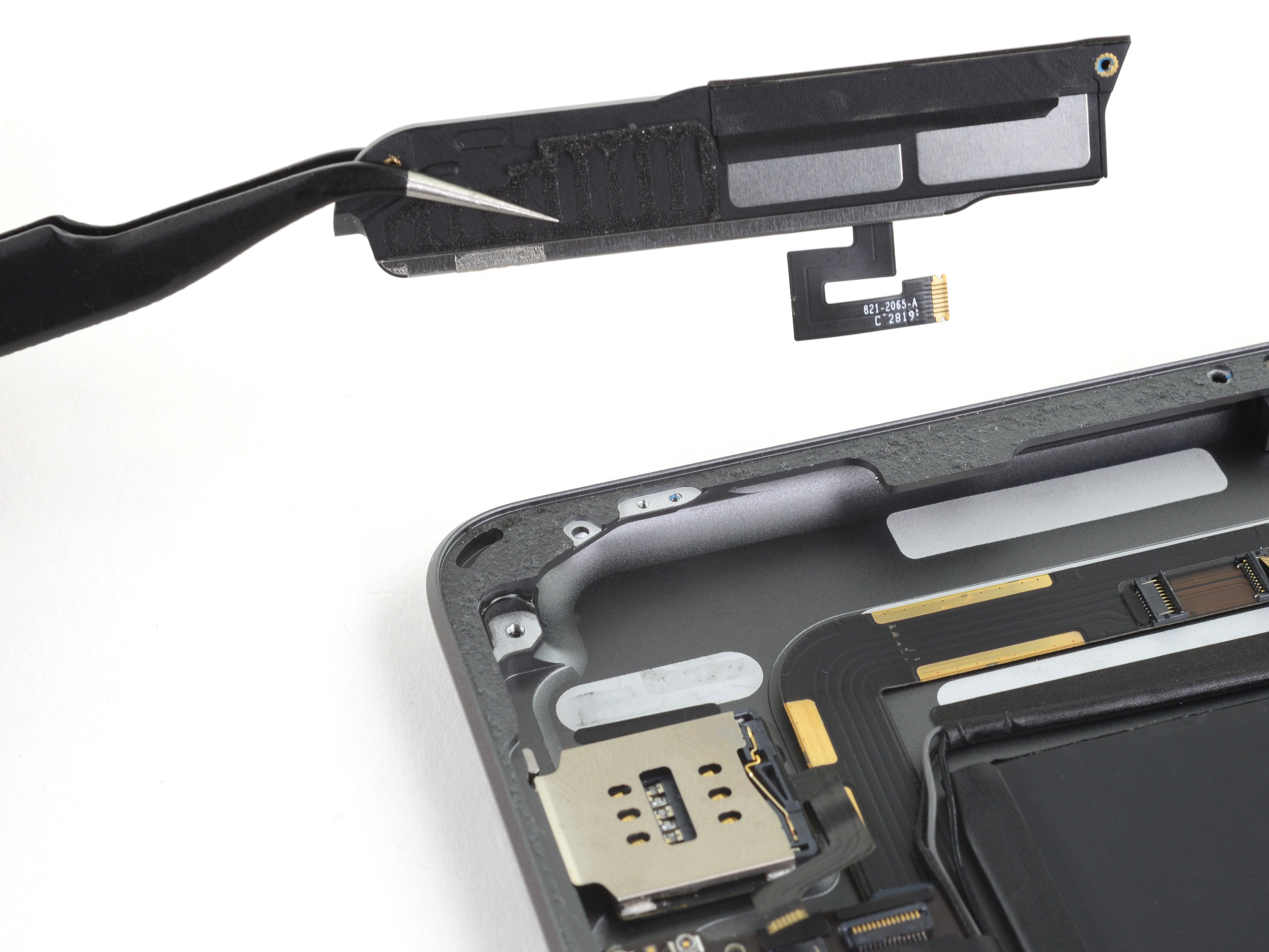iPad 9 LTE Cellular Antennas Replacement
Duration: 45 minutes
Steps: 66 Steps
Ready to tackle the challenge of swapping out the cellular antennas in your iPad 9 LTE? Awesome! Just remember to handle that battery with care—use a battery blocker to keep things safe. Those battery contacts can be a bit delicate, and we don’t want any irreversible oopsies! If you decide to skip isolating the battery, stick to using metal tools only when absolutely necessary (like for those pesky screws) to steer clear of shorting the battery or messing with the sensitive circuit components. A quick heads-up: some of the photos in this guide might feature a different model, and while they may look a tad different, they won't throw you off the repair path. Happy fixing!
Step 1
Make sure to turn off your iPad before diving into the repair adventure!
- Warm up your iOpener and give it a cozy two-minute hug on the left edge of your iPad.
Tools Used
Step 2
- While you wait for the adhesive to loosen up, keep an eye out for these sensitive spots that might need a little extra care when prying:
- Front camera
- Ambient light sensors
- Antennas
- Display cables
Step 3
The next three steps show you how to use the Anti-Clamp, a handy tool we created to make opening your device a breeze. Not using the Anti-Clamp? No worries—just skip ahead three steps for another way to get the job done.
For full details on how to operate the Anti-Clamp, check out this guide.
If your iPad’s surface is too slick for the Anti-Clamp to grip, try adding some tape to give it a better hold.
- Give that blue handle a gentle tug back to release the Anti-Clamp's arms.
- Set your iPad on something sturdy so it's perfectly balanced between the suction cups.
- Place the suction cups close to the center of the left edge—one at the top and the other at the bottom.
- Keep the bottom of the Anti-Clamp steady and press down firmly on the top cup to create a good seal.
Step 4
- Give that blue handle a gentle tug forward to secure those arms nice and tight.
- Now, twist that handle clockwise for a full 360 degrees, or until you see those suction cups starting to stretch—it's like a little workout for your device!
- Keep an eye on those suction cups; they need to stay in sync. If they start to drift apart, just loosen them a bit and realign those arms. Teamwork makes the dream work!
Step 5
Turn no more than half a twist at a time, then take a breather for a minute. Let the Anti-Clamp and a little patience do their magic!
For a full rundown on working with a hair dryer, be sure to check out this guide.
If the Anti-Clamp isn't making enough space, just crank up the heat a bit more and give that handle a good half turn clockwise.
- Hang tight for about a minute to let the adhesive loosen up and create a little opening for you.
- If your screen isn't warming up enough, you can give it a gentle boost with a hair dryer along the left edge of the iPad.
- Slide an opening pick under the digitizer once the Anti-Clamp has given you a nice gap to work with.
- Feel free to skip the next step.
Step 6
If your screen is shattered, try covering it with a piece of clear packing tape to help the suction cup stick. If that doesn’t work, grab some heavy-duty tape to replace the suction cup. And if you’re in a real pinch, a dab of superglue can help secure the suction cup to your broken screen. Just be careful, it's a delicate operation!
- Once the screen feels warm to the touch, place a suction handle on the left edge of the screen, as close to the edge as you can get.
- Gently lift the screen using the suction handle, creating a small gap between the digitizer and the frame.
- Carefully slide an opening pick into that gap between the digitizer and the frame.
Tools Used
Step 7
No need to stress if you spot the opening pick through the digitizer — just go ahead and pull it out. The LCD screen should be safe, but keep in mind, you might leave some sticky adhesive behind that's a little tough to clean up.
- Slide a second opening pick into that gap you just made. Nice job so far!
- Gently glide the pick toward the bottom-left corner of your iPad to separate the adhesive. Take your time, it’ll pay off!
- Keep that pick in place at the bottom-left corner so the adhesive doesn’t decide to make a comeback. We’re almost there!
Step 8
- If the opening pick finds itself stuck in the adhesive, just give it a little 'roll' along the side of the iPad to keep on separating that sticky stuff.
Step 9
- Gently slide the first opening pick toward the top-left corner of your iPad to break that stubborn adhesive seal.
- Keep that pick in the top-left corner to stop the adhesive from getting all cozy and sealing back up.
Step 10
- Warm up an iOpener and chill it right on the top edge of your iPad for a solid two minutes.
Tools Used
Step 11
Gently slide the pick in no more than 7 mm to keep that ambient light sensor safe and sound.
- Gently twist the pick around the top-left corner of the iPad to loosen the adhesive and start the separation.
Step 12
Keep your pick away from the front camera lens—sliding over it could cause some unwanted damage. Don't worry, the next steps will show you how to dodge that!
- Gently slide the opening pick along the top edge of the iPad, stopping right before the front camera to keep things safe and sound.
Step 13
- Gently pull the pick out until just the tip is nestled between the digitizer and the frame. You've got this!
- Carefully slide the pick above the front camera to break that stubborn adhesive free. Keep it smooth!
- Leave the pick hanging out near the right side of the front camera before you move on. You're doing great!
Step 14
- Slide that trusty pick back in and shimmy it up towards the top-right corner of the iPad to fully break free from the adhesive's grip.
- Keep the pick tucked in that top-right corner to stop the adhesive from getting cozy again.
Step 15
- Warm up your trusty iOpener and stick it on the right edge of your iPad for a cozy two minutes.
Tools Used
Step 16
Be sure to only slide that pick in up to 4 mm to keep the ambient light sensor safe and sound!
- Gently twist the pick around the top-right corner of the iPad to loosen the adhesive and start the separation.
Step 17
The display cables hang out about halfway up from the bottom of your iPad. Slide carefully and stop once you’re about three inches from the bottom—that’s the sweet spot!
- Pop in a fresh opening pick and slide it smoothly to the center of the iPad’s right edge.
Step 18
- Warm up that iOpener and press it against the bottom edge of your iPad for a cozy two minutes.
Tools Used
Step 19
Avoid spinning the pick all the way around the corner—your antenna will thank you for the gentle touch!
Take a look at the third image, where you'll spot the bottom-left antenna hiding under the digitizer. It's a sneaky little component, but no worries—you've got this!
- Gently slide the bottom-left pick into the corner to break that adhesive seal like a pro!
- Once you're in there, leave the pick nestled in the corner before moving on to the next step.
Step 20
Make sure to only slide the pick towards the home button – pushing it away could send your antenna on a wild adventure!
If you find yourself needing to slide the pick over this spot again, just pull it out and pop it back in at the bottom-left corner to keep things smooth.
- Gently slide a new opening pick into the little gap you've made at the bottom edge of your iPad.
- Carefully glide the pick over the antenna, but stop just shy of the home button.
- Make sure to leave the pick to the left of the home button before moving on to the next step.
Step 21
- Carefully slip an opening pick into the gap you just made.
- Gently slide the pick under the home button, heading toward the bottom-right corner, making sure only the tip is sneaking between the digitizer and the frame.
Step 22
Slide the pick gently towards the home button only—going the other way might mess with the antenna, and we want to keep things safe and sound!
If you find yourself needing to glide that pick over this area again, just pop it out and slide it back in starting from the bottom-right corner.
- Slide the pick back in and nudge it toward the home button to fully break through the bottom adhesive.
- Rest the pick just to the right of the home button before moving on.
Step 23
- Grab that iOpener and give it a warm-up! Place it on the right edge of your iPad for a cozy two minutes. Let's get that adhesive nice and toasty!
Tools Used
Step 24
Take it slow and steady here. Make sure the adhesive is warm and flexible before you start, and carefully slide your opening pick all the way through the adhesive. Don’t hesitate to pause and warm things up again if needed.
If you hit some serious resistance, go ahead and warm up the edges again, then gently wiggle your opening pick along them.
- Gently twist the two opening picks positioned at the left corners of the iPad to nudge the digitizer up just a bit, helping to peel away the last stubborn bits of adhesive.
Step 25
- Gently lift the left edge of the digitizer upwards to loosen the adhesive along the right side of the iPad.
Step 26
Heads up! Gently wiggle your opening pick to avoid stressing the two delicate display cables.
- Carefully hold the digitizer in place and slide an opening pick between the two display cables to gently break apart the last bit of adhesive.
Step 27
- After you've carefully separated all the adhesive, open the digitizer like a book and lay it flat next to the iPad.
- When putting everything back together, wipe away any leftover adhesive from the frame—and the digitizer if you’re reusing it—using some isopropyl alcohol. Then, stick on fresh adhesive strips or pre-cut adhesive cards to keep things secure.
- Watch out for those delicate display cables during reassembly! Fold them neatly under the LCD screen to avoid any accidental damage.
Step 28
- Grab your trusty tweezers or just use your fingers to peel away any tape that’s hiding those pesky LCD screws.
Tools Used
Step 29
- Grab your trusty Phillips #00 screwdriver and twist out the four 4.2 mm screws holding the LCD screen in place.
Tools Used
Step 30
The LCD is gently stuck to the frame, so take it easy while separating them.
- Slide a spudger into the gap between the frame and the top-right corner of the LCD.
- Gently pry with the spudger to break the adhesive's hold.
Tools Used
Step 31
- Now, go ahead and do the same thing for the top-left corner of the LCD—easy does it!
Step 32
Hold your horses! Don't try to yank the LCD off just yet, it's still hanging on by a flex cable.
- Gently slide the flat end of a spudger under the LCD just enough to lift it out of its slot so you can grab it with your fingers.
- Carefully flip the LCD over like turning a page, lifting near the camera and rotating it around the home button side of the frame.
- Place the LCD face down on a clean, soft, lint-free surface so you can easily access the display cables.
Tools Used
Step 33
- Grab your trusty Phillips screwdriver and unscrew the little 2.3 mm-long screw that's holding the battery connector to the logic board. You've got this!
Step 34
Check out these photos to see the battery connector chilling right under the logic board. Keep them handy as you carefully unplug the battery.
Heads up: the battery connector has cantilever springs on the logic board that press against the battery's contact pads. Since both the logic board and battery are glued down, you'll want to gently slide something thin and flexible between the contacts to safely disconnect the battery.
Step 35
Heads up! When you’re isolating the battery with a battery blocker, go easy on those battery contacts—they’re delicate and can bend or break super easily, causing damage that can’t be fixed.
Make sure the iFixit logo on the battery blocker is facing up like a proud banner!
Be gentle with the battery blocker; no need to force it under the connector. If it’s being stubborn, a playing card can step in to help disconnect the battery instead.
The battery blocker or playing card should slide under the logic board smoothly, without any hiccups. Once it’s in, it should rest at a cozy 15-degree angle.
- Gently slide the battery blocker underneath the logic board's battery connector, angling it at about 35 degrees.
- Keep the battery blocker in place while you continue working to keep things safe and sound.
Tools Used
Step 36
- Grab your trusty Phillips screwdriver and get ready to tackle those three little screws that are holding the display cable bracket in place. They're just 1.4 mm long, so it's a quick job!
Step 37
- Take off the display cable bracket to get access and keep things loose and easy.
Step 38
- Gently use the flat end of a spudger to lift and unplug the LCD cable press connector.
- When reconnecting press connectors like this one, line up one side carefully and press down until you hear a click, then do the same on the other side. Avoid pressing the middle, as misalignment can bend the pins and cause permanent damage.
Tools Used
Step 39
- Carefully lift the LCD off completely and lay it face down on a clean, soft, lint-free surface to keep it safe and sound.
Step 40
- Grab a trusty pair of tweezers and gently lift off the tape that's shielding the home button cable ZIF connector. You've got this!
Tools Used
Step 41
- Grab a spudger, opening tool, or even your fingernail to gently flip up the tiny hinged locking flap on the home button cable ZIF connector.
Tools Used
Step 42
- Grab your tweezers and gently pull the home button ribbon cable straight out of the ZIF connector. Easy does it!
Tools Used
Step 43
Be gentle and only pry at the connectors themselves—avoid poking around the logic board socket to keep your iPad happy and safe.
- Gently slide the flat end of your spudger under the two digitizer cable press connectors to pop them loose.
Tools Used
Step 44
Watch out—don't poke or rip the home button ribbon cable! Treat it like the delicate little superstar it is.
- Grab that trusty spudger and gently nudge the buffer block up from the bottom-right corner of your iPad. It's like giving it a little tap to say, 'Hey there!'
- Now that you've coaxed it out, go ahead and remove that buffer block like a pro.
Tools Used
Step 45
The home button cable is held in place with a little bit of gentle adhesive.
- Grab your tweezers and gently lift the home button cable away from the frame like you're peeling a sticker. You've got this!
Tools Used
Step 46
Grab an opening pick and carefully slide it under any leftover adhesive still holding the front panel assembly to the frame—think of it as gently breaking up a sticky situation.
Without the right insulation, parts of the digitizer might short out by touching other components, which can mess with your touch input and cause it to act up.
This insulation is sneaky—it's invisible to the naked eye and not the same as the foam dust barriers you often see on iPads.
- Start by gently detaching the front panel assembly.
- If you're facing any pesky 'ghost' or 'phantom' touch problems with your shiny new display, fear not! A simple fix is to apply a super thin layer of insulating tape, like Kapton (polyimide) tape, to the highlighted areas on the back of the panel. Luckily, the replacement digitizers from us come with the right insulation, so you might not even need any extra tape.
- As you gear up for reassembly, make sure to clear away any leftover adhesive from the iPad. Give those glued spots a good clean with some high concentration isopropyl alcohol (90% or more) and a lint-free cloth. This little prep work will help the new adhesive stick like it's meant to!
- Before you seal everything up, check out your iPad's functions, and apply the pre-cut adhesive strips to the back of the display, following our display adhesive application guide. You're almost there!
Step 47
- Gently peel away the LCD buffer tape from the upper component bracket.
Step 48
- Grab your trusty Phillips #00 screwdriver and carefully unscrew the five screws holding down the upper component bracket:
- Three screws, each 1.4 mm long
- Two screws, each 1.9 mm long
Tools Used
Step 49
- Gently pry up the upper component bracket using the pointed end of your spudger until it’s loose enough to grab with your fingers.
Tools Used
Step 50
- Gently use your fingers to lift the upper component bracket off the tape.
- Take out the upper component bracket.
Step 51
- Carefully peel back any tape that’s hiding the left ambient light sensor’s ZIF connector.
Step 52
- Grab a spudger, an opening tool, or even your trusty fingernail and gently lift the little hinged locking flap on the left ambient light sensor's ZIF connector. You’ve got this!
Tools Used
Step 53
- Grab your trusty tweezers and gently coax the left ambient light sensor cable out of the ZIF connector, keeping it straight and steady. You're doing great!
Tools Used
Step 54
The left ambient light sensor is just gently stuck to the frame, so take it easy when handling it.
- Grab those tweezers or just use your fingers, and gently pry that sensor out of the frame like a pro!
Tools Used
Step 55
- Grab your trusty tweezers and gently tackle any leftover adhesive on the frame. You're almost there!
Tools Used
Step 56
- Gently peel away any tape that’s covering the headphone jack’s press connector. You've got this!
Step 57
- Gently use the flat end of the spudger to lift up and detach the headphone jack's press connector. You've got this!
Tools Used
Step 58
The headphone jack cable is gently stuck to the frame.
- Grab some tweezers or just use your fingers to carefully lift the headphone jack cable away from the frame.
Tools Used
Step 59
- Grab your trusty Phillips screwdriver and let's get to work! Remove that 3.3 mm-long screw holding the headphone jack snugly in place on the frame. You've got this!
Step 60
- Grab your trusty tweezers and gently pull that headphone jack out of its cozy little home. Give it a nice, careful removal and you're one step closer to success!
Tools Used
Step 61
- Grab your trusty Phillips #00 screwdriver and let's tackle those seven screws holding the cellular antennas snug against the frame:
- Three of those little 1.4 mm screws are waiting for you.
- And don't forget the four additional 1.4 mm screws that need your attention!
Tools Used
Step 62
- Grab the pointy end of your spudger and gently pry up the right cellular antenna coaxial cable right by the connector—precision is key!
- Now, go ahead and disconnect the left antenna cable.
Tools Used
Step 63
- Grab your trusty spudger and gently lift up those antenna connectors to pop them loose—easy does it!
Tools Used
Step 64
- Gently coax the right cellular antenna's coaxial cable away from the frame using your fingers, like you're peeling a banana—just be careful not to slip!
Step 65
- Grab those tweezers or use your fingers to gently lift the left cellular antenna bracket. Give it a little nudge to pop it out of its snug spot.
- Now, let's say goodbye to the left cellular antenna as you remove it from the rear case.
Tools Used
Step 66
- Time to put everything back together! Just retrace your steps and follow these instructions in reverse.
- Got some e-waste? Don’t just toss it—take it to an R2 or e-Stewards certified recycler to give it a proper send-off.
- If things didn’t go quite as you hoped, don’t sweat it! A little basic troubleshooting might do the trick, or you can always reach out to our iPad 8 Answers community for some extra support.
-
















































































